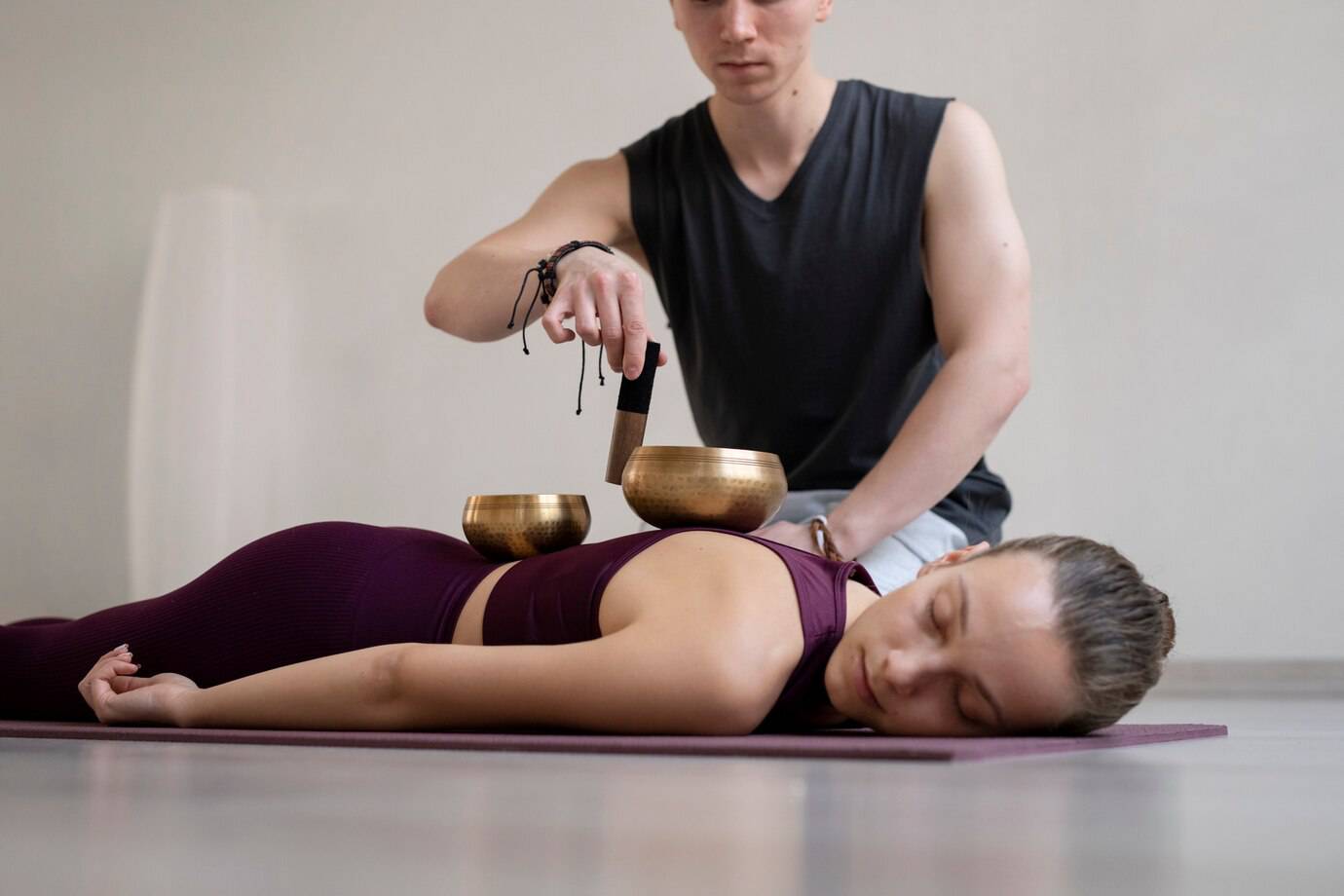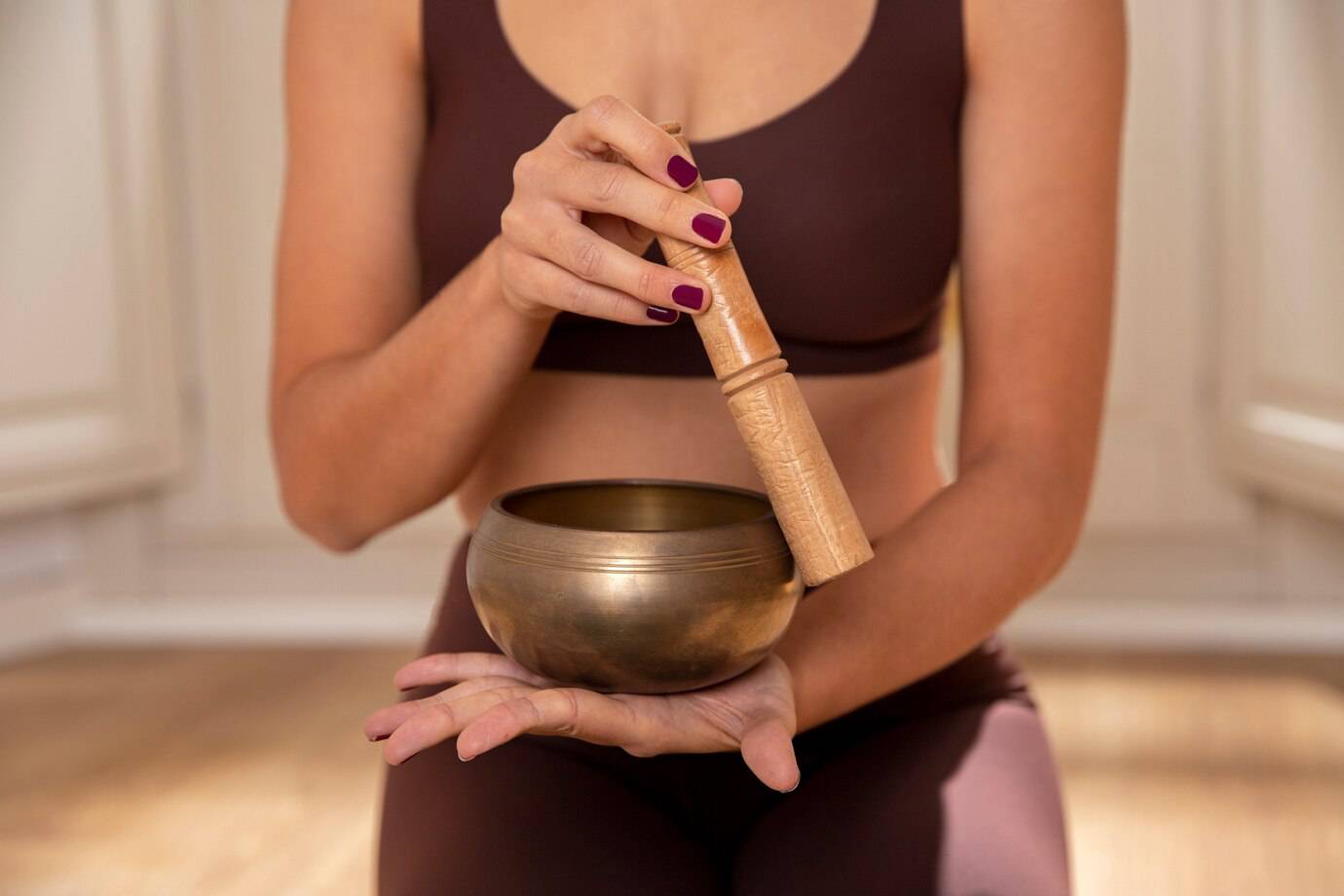
How to Perform a Sound Bath Meditation
When was the last time you allowed your entire body to just listen? In a world dominated by noise, true stillness feels rare—and that’s exactly why sound bath meditation is growing in popularity.
More than just a trendy wellness ritual, sound baths offer deep relaxation techniques and vibrational healing benefits, supporting stress relief, emotional clarity, and even improved sleep. Whether you’re a seasoned meditator or new to energetic practices, this guide will walk you through how to create and experience a powerful sound bath at home.
Understanding the Core: What is Sound Bath Meditation?
A sound bath is a meditative experience where participants are “bathed” in sound waves produced by instruments like crystal singing bowls, gongs, chimes, or tuning forks. Unlike music therapy, sound baths are non-verbal and free-form, focusing on resonance and vibrational frequency rather than melody or rhythm.
How Does Vibrational Healing Work?
Every cell in your body vibrates at a certain frequency. Stress, trauma, or illness can disrupt this natural harmony. Sound healing aims to bring the body back into alignment by stimulating the parasympathetic nervous system, slowing the heart rate, and encouraging cellular restoration through vibration.
“Sound is not just heard with the ears—it is felt through every cell in the body.” — Dr. Mitchell Gaynor, Integrative Oncologist
Quick-Reference Summary: Sound Bath Essentials
- Create a peaceful, distraction-free space
- Choose your instruments (singing bowls, gongs, tuning forks)
- Set an intention for your session
- Begin with breathwork or body scan
- Play instruments gently and intuitively
- End with stillness and reflection
- Stay hydrated and journal insights after
Step-by-Step Guide: How to Perform a Sound Bath Meditation

1. Create a Soothing Space
Find a quiet room with minimal distractions. Dim the lights or light a candle. You can lie on a yoga mat, bed, or blanket with a cushion under your knees for support.
Secret Tip: Add a crystal grid or essential oil diffuser for deeper sensory immersion.
2. Select Your Instruments
No need to buy everything at once. Choose based on your budget and goals:
- Crystal Singing Bowls: High vibration; ideal for chakra balancing
- Tibetan Singing Bowls Earthier tones, grounding and calming
- Gongs: Great for deep, energetic shifts
- Tuning Forks: Targeted frequency healing (e.g., for headaches or joint pain)
- Rainsticks, chimes, ocean drums: Great for layering and flow
Pro Tip: Start with one or two instruments and expand as your comfort grows.
3. Set an Intention
Before you begin, focus your energy. Your intention could be simple:
“I welcome deep relaxation.” “I release emotional tension.” “I am open to clarity.”
This intention anchors the experience.
4. Begin with Breath or Body Awareness
Take 3–5 deep breaths to centre yourself. You may wish to do a light body scan, noticing areas of tension and consciously softening.
5. Start Playing the Instruments
Begin with soft, circular movements around the rim of a bowl or gentle gong taps. Avoid abrupt sounds unless used intentionally.
- Move slowly and rhythmically
- Layer sounds intuitively
- Focus on transitions between tones rather than constant stimulation
Allow the sound to rise and fall like waves, creating space for integration.
6. Conclude with Silence
After 10–40 minutes (based on preference), let the final sound fade completely. Sit in silence for a minute or two, feeling the residual vibrations in your body.
Important Things to Remember
- Don’t overplay – Silence is as valuable as sound. Give the body time to absorb.
- Time it with moon cycles – Full moons enhance emotional release; new moons are ideal for setting intentions.
- Use quality headphones – If listening to pre-recorded baths, avoid tinny audio, which can cause tension.
Important: Avoid metal bowls if you’re wearing a pacemaker or are highly sensitive to sound. Always consult a healthcare provider if unsure.
Best Practices & Additional Insights

- Schedule sound baths weekly for mental clarity and emotional reset
- Combine with other practices like yoga nidra or Reiki for layered healing
- Keep a sound bath journal – track dreams, emotional shifts, or physical changes after sessions
For a deeper ritual, try pairing your sound bath with this guide on how to perform a crystal grid for manifestation.
FAQs for ound Bath Meditation
Can I lead my own sound bath if I’m not trained?
Yes, for personal use! Start small and intuitive. For group sessions, it’s recommended to study with a certified sound healing practitioner.
How long should a sound bath last?
Anywhere between 10 and 60 minutes is fine. Beginners may start with 15–20 minutes and build up gradually.
Is it safe during pregnancy?
Generally, yes, but avoid lower-pitched gongs and overly intense vibrations. Always consult your midwife or doctor.
Do I need special musical skills to play sound bath instruments?
Not at all. Sound baths are about intuition and intention, not musical talent. Let your movements be slow, mindful, and led by how the sound feels.
What should I do if I get emotional during a session?
Emotions may rise as your body releases tension. Allow them to move through you gently, and journal afterwards to process any insights or feelings.
Can children or pets be present during a sound bath?
Yes, but keep the volume soft and observe how they respond. Many pets and children naturally relax or show curiosity during gentle vibrational experiences.
What time of day is best for a sound bath?
Any time works, but evenings are especially effective for winding down. Morning sessions can set a grounded tone for the day ahead.
Conclusion: Let the Sound Guide You Home

Sound bath meditation is more than a relaxation technique—it’s a return to your body’s natural rhythm. By embracing this practice, you invite stillness, healing, and profound inner peace. Whether you’re using bowls, gongs, or simply your breath and intention, sound has the power to reconnect and renew you.
Ready to get started? Choose your first bowl or tuning fork and create a sacred space for your first session today.


